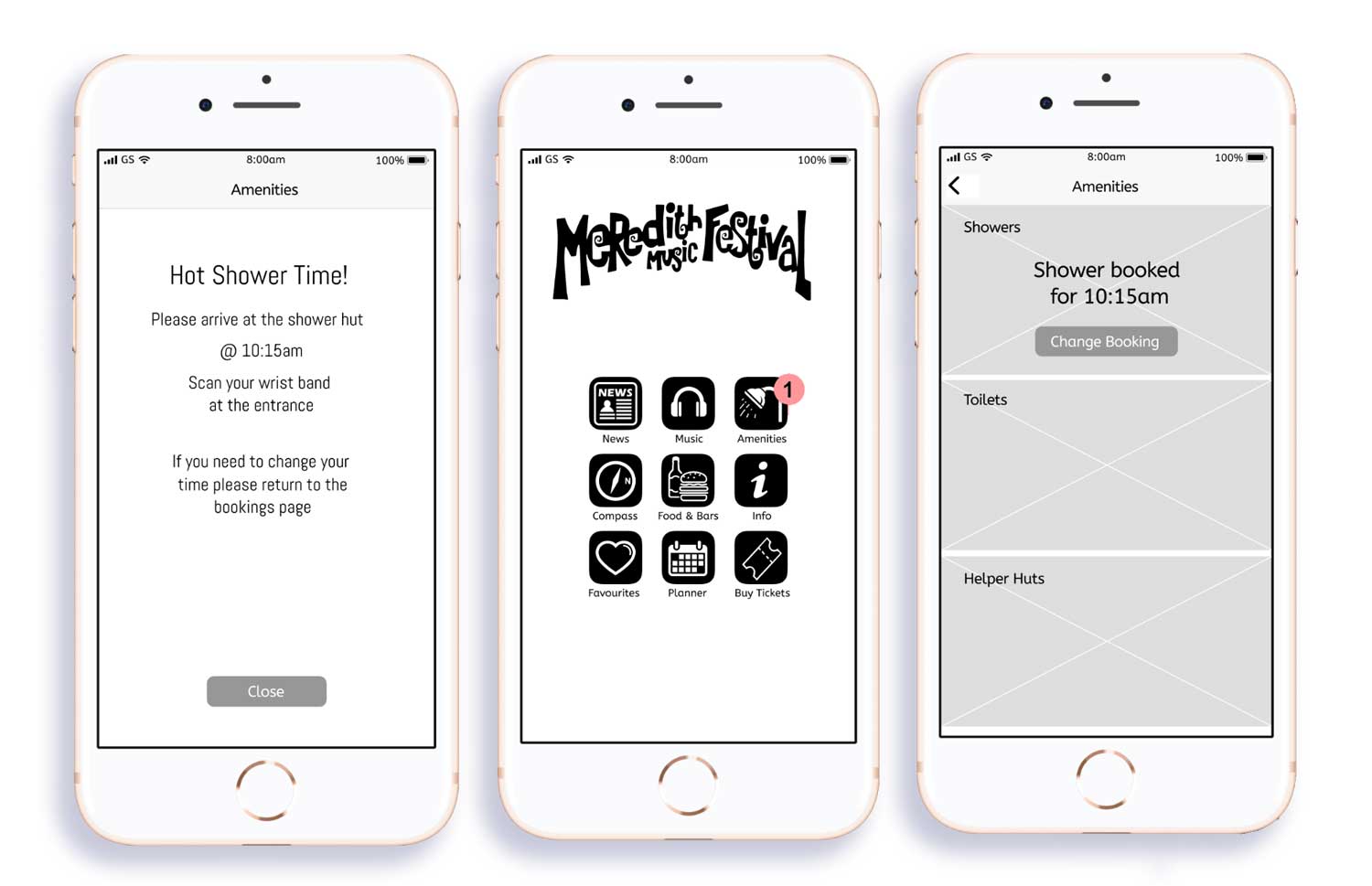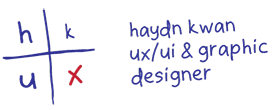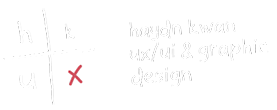
The case study
Would a phone app improve the festival experience?
Meredith Music Festival, a three day camping festival held outside Melbourne is one of the few major festivals around Australia that is yet to introduce a phone app. Patrons enjoy themselves anyway but how might an app improve their experience?
For my individual project at General Assembly I had a 2 week sprint to research and design an app that would help improve this festival experience.
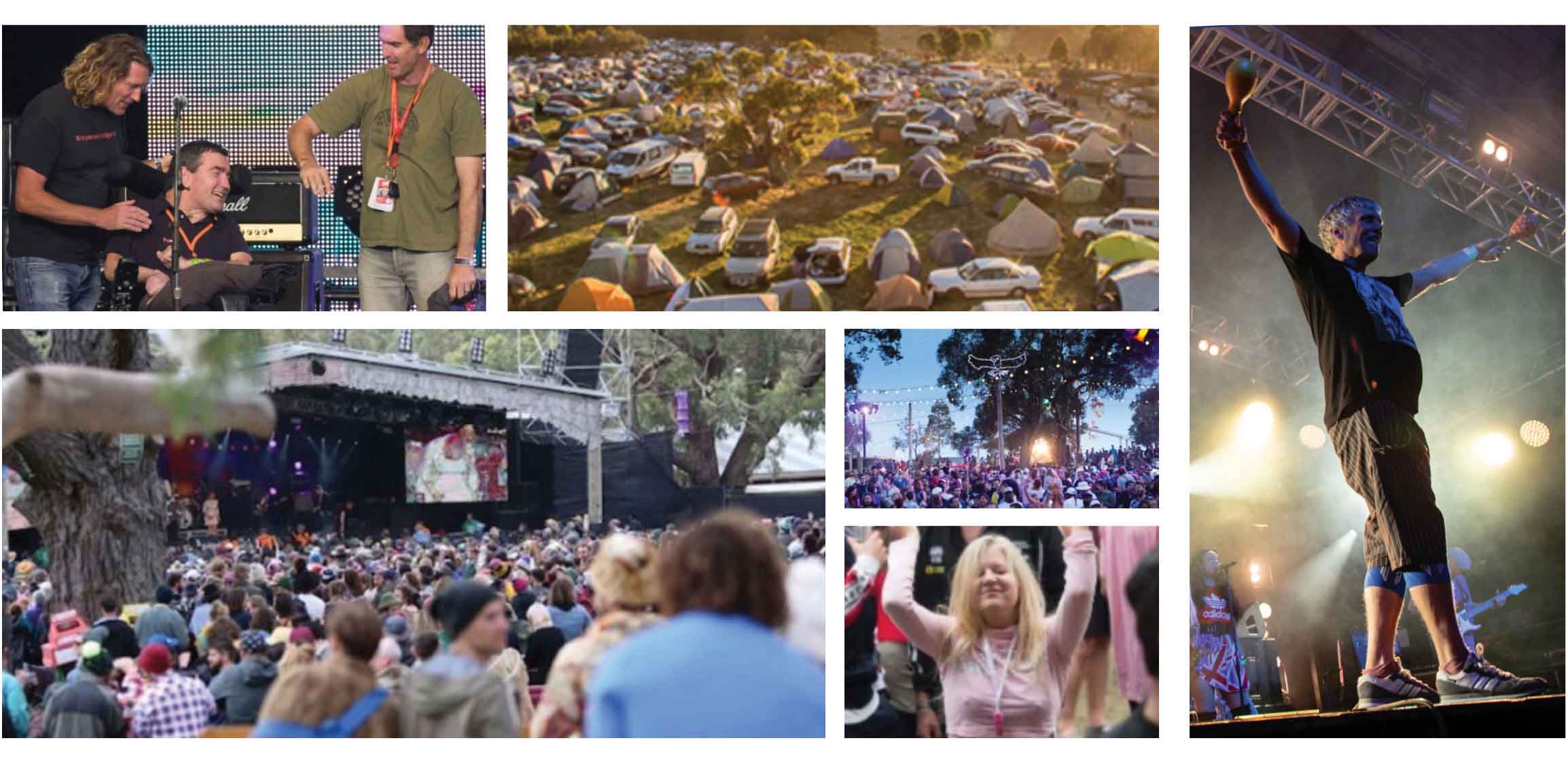
Along with music information these apps were stacked with convenient features like a lost property finder and a compass that helps users to find their campsite.
interviews
These business insights help influence the questions I asked during interviews. These questions ranged from planning for the event through to planning for the journey back home.
I conducted twelve pre-planned interviews each lasted around 10-20 minutes. I then created a short online survey with open questions to explore attendees frustrations in more detail.
affinity map
I synthesised the data from these interviews to find large groupings that could be turned into key findings. To do this I wrote my interview/survey findings onto post it notes and created an affinity map.
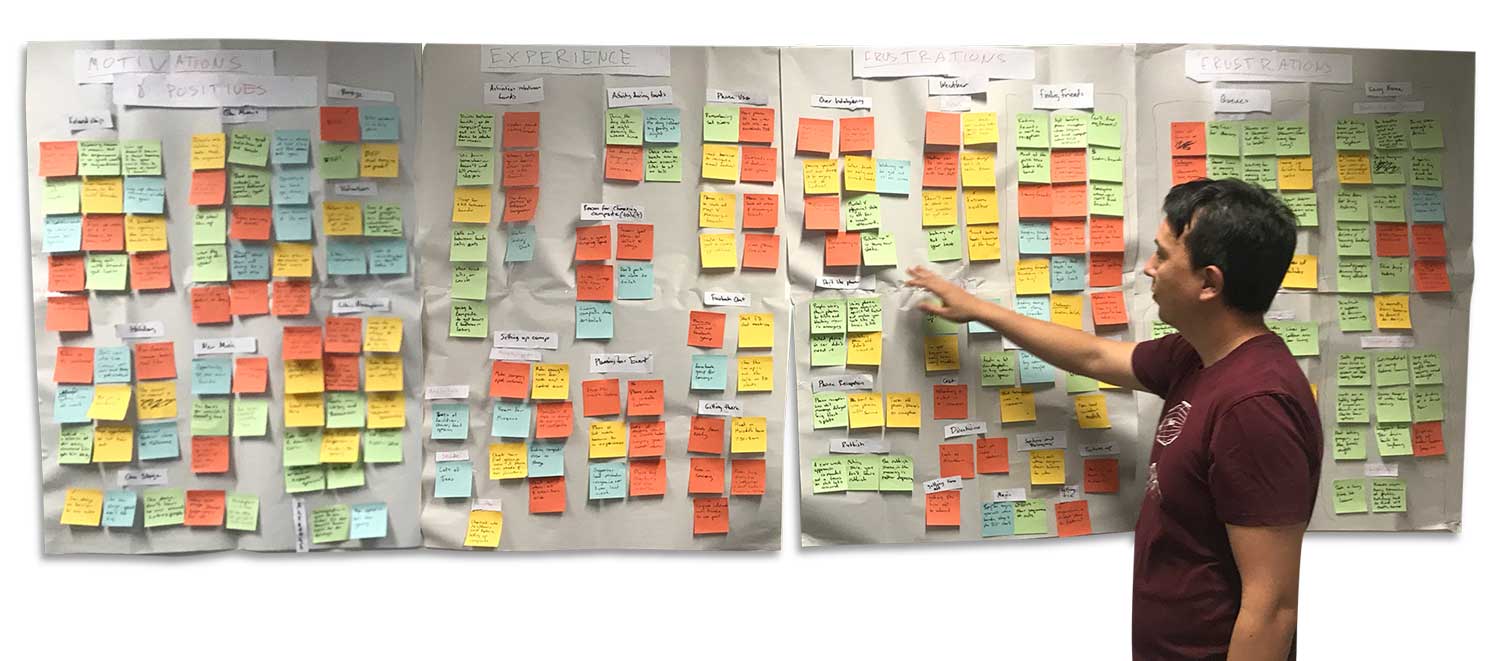
Affinity map used to synthesis interview notes into key groupings
The key motivations for attending were ‘being with friends’, ‘seeing a variety of bands’, ‘discovering new music’, ‘escaping from routine’, ‘enjoying the atmosphere’ and ‘BYO alcohol’..
The biggest frustrations on the other hand were ‘finding friends’, ‘getting home ‘and ‘ queueing for amenities’.
“I waited 45 minutes for a shower.”
Getting lost wasn’t a problem for everyone though;
“I don’t get lost I just meet new people.”
persona
To keep the needs and frustrations of the user at the forefront of my decision making I condensed my key findings into a persona, Jake Weatherspoon.
Jake goes to the festival to be around friends and discover new bands. His biggest frustrations are queueing for showers , losing his mates and being too trashed to drive home on the last day.
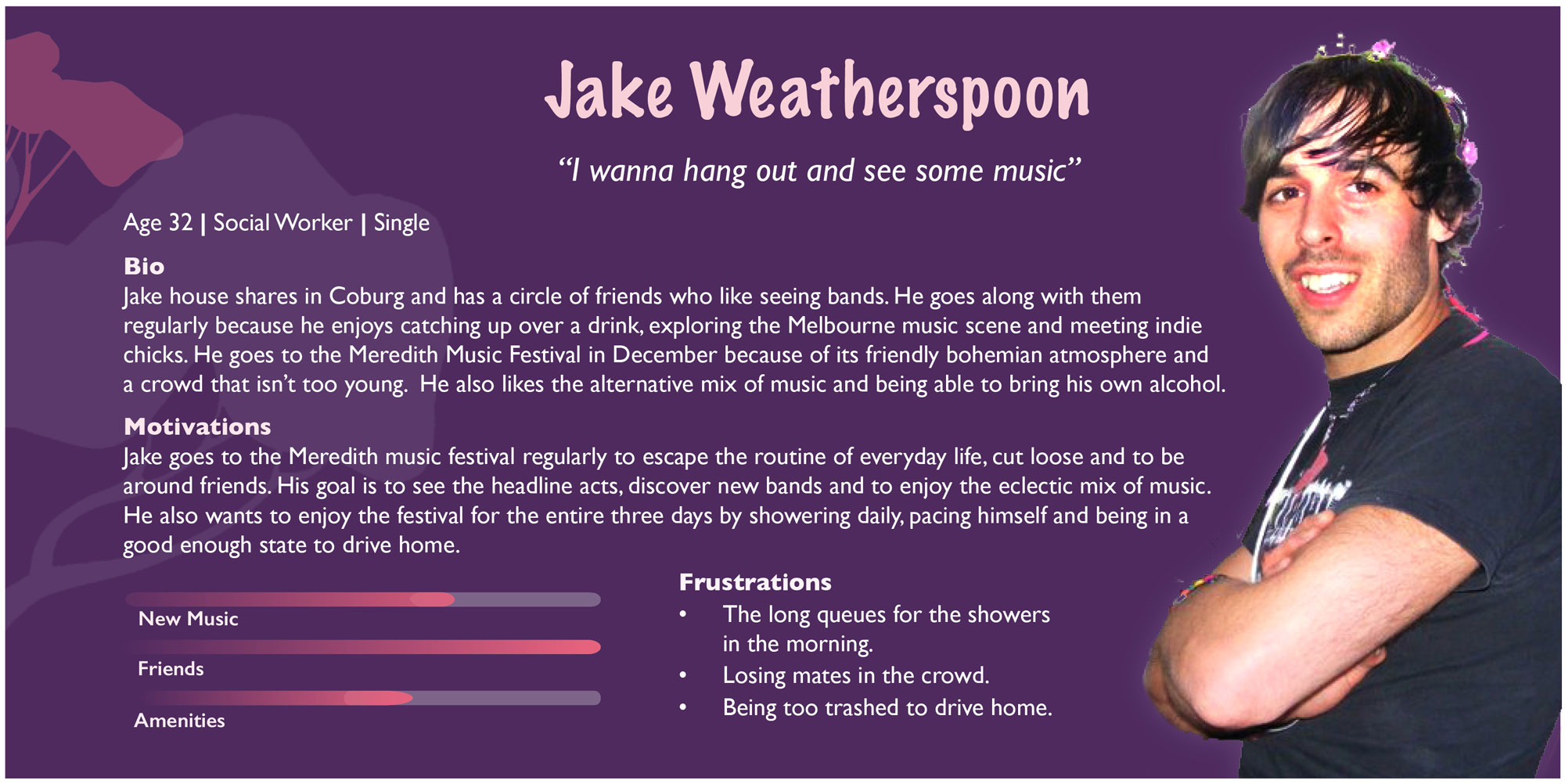
Persona – Meredith Music Festival attendee.
user flow
My first step towards making this booking system was to create a simple wireframe user flow. In this Jake books a $3 shower + soap via the app. He chooses a time slot and then receives a text message confirmation with a barcode telling him that he needs to take it with him for shower entry.
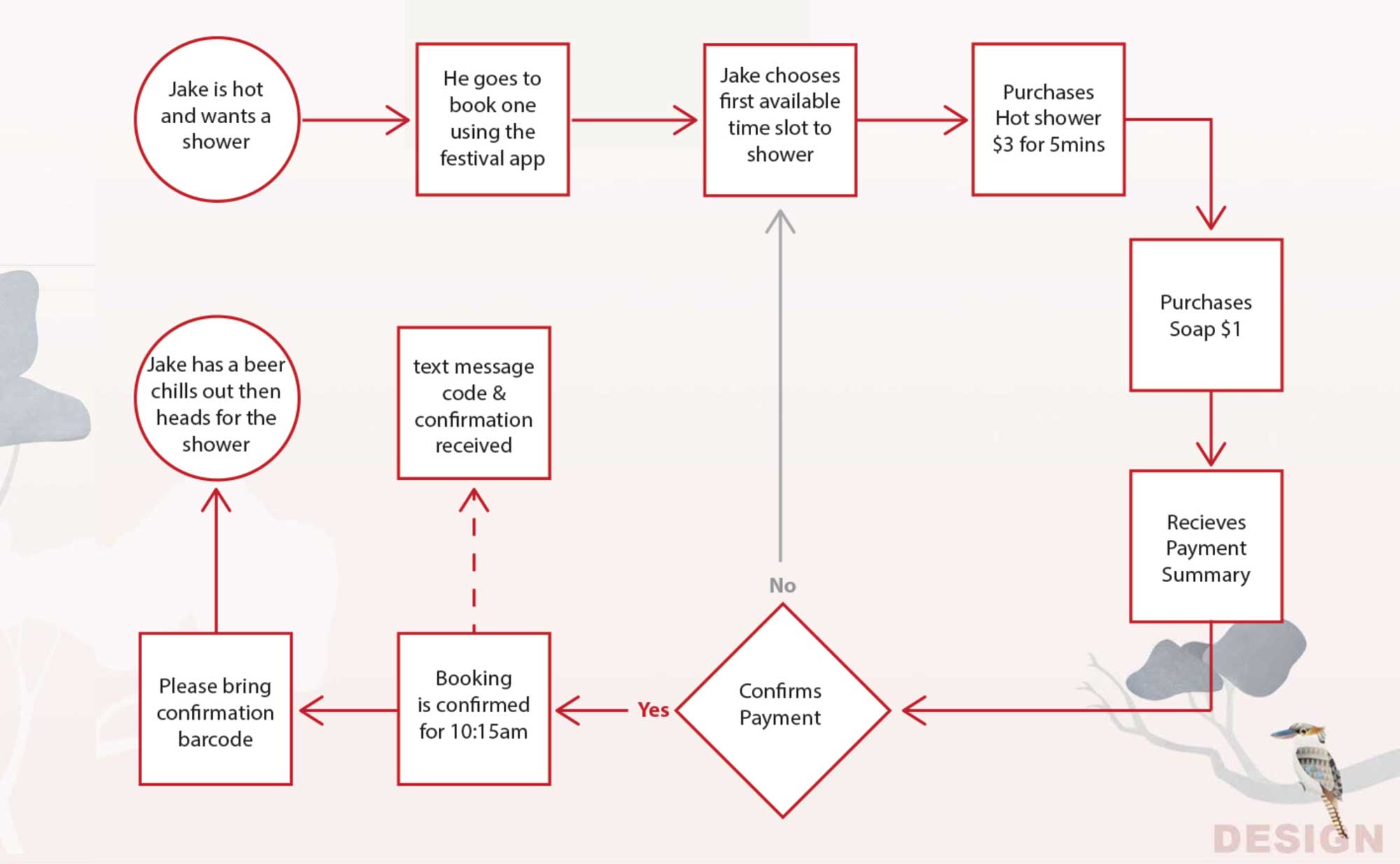
Solution userflow demonstrates how the app booking system in navigated.
paper prototype: iteration one
I then made a paper prototype to simulate a digital app so I could quickly determine if there were any navigational issues or any important information that I had forgotten to include.
To test this I presented volunteers with the task of booking a shower and then observed how they navigated through it.
Navigating the booking system via the paper prototype.
“That’s a lot of steps for only four dollars”
After testing it on 4 volunteers I found that some screens could be condensed into one reducing clicking time. The payment process was also too slow for such a small amount of money.
paper prototype: iteration two
I discovered some music festivals were using smart wristbands that had been fitted with radio frequency identification (RFID) allowing patrons to quickly tap and go when they were queueing to buy alcohol.
I also found that newer smartphones allow near field communication (NFC) which means it can read smart wristbands allowing patrons to quickly tap their phone and pay for their shower via the app. For iteration two I asked volunteers to use the wristband to pay instead.
Iteration 1: Digital prototype for testing our volunteers on a phone
The phone number was no longer necessary because patrons now used their wristbands to tap in at the shower cubicle and no longer needed the barcode messaged to them.
“Do I loose my $4 if I’m late?”
It was also pointed out to me that patrons couldn’t rebook if they missed their spot.
digital prototype: iteration two
